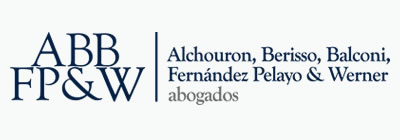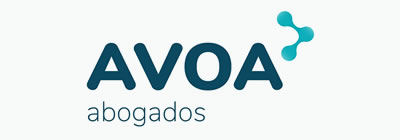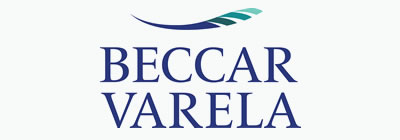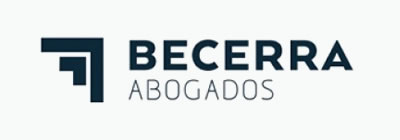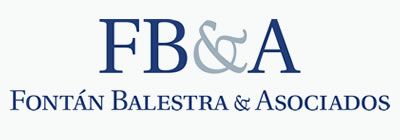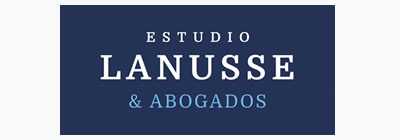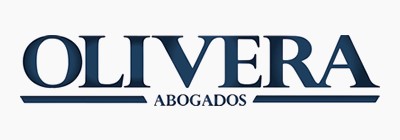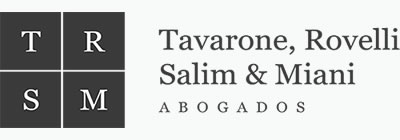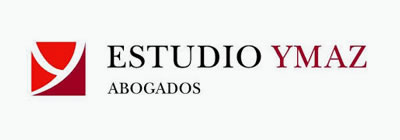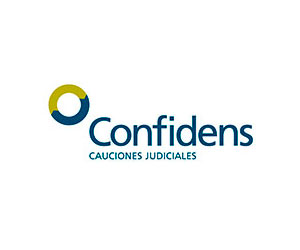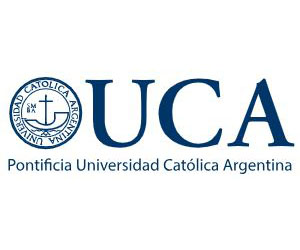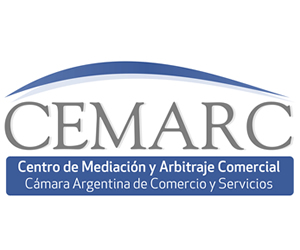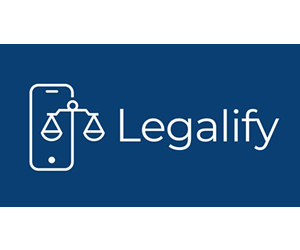Artículos
Martes 12 de Mayo de 2009
Capítulo Argentino de la Publicación Getting the Deal Through – Banking Regulation
Por Javier Canosa
Estudio Canosa Abogados
1) What are the principal governmental and regulatory policies that govern the banking sector?
In Argentina the government’s policy towards the banking sector has not been stable. Argentina’s policies have varied according to the amount of governmental control and intervention in the financial market. Currently, since the massive devaluation of 2002, the Argentine Central Bank (the Central Bank) has adopted a more interventionist role in the economy in general. This more interventionist role is also reflected in the financial market. In broad terms, the governmental policies aim at providing for a stable money market that stimulates savings and investments in Argentina and the protection of deposits in the Argentine financial system.
2) Please summarise the primary statutes and regulations that govern the banking industry.
The basic structure of the Argentine banking system is set forth under Law No. 21,526 enacted in 1977 (the Law on Financial Entities). The Law on Financial Entities is the basic charter that regulates banks, classifies them (commercial-retail banks, investment banks, mortgages banks, financial companies, and other players of the financial market), provides how they will be authorised to operate in the Argentine financial market (minimum capital requirements, etc), decides which operations shall be prohibited, and the procedure for the liquidation and winding-up of financial entities. The Law on Financial Entities also sets forth the regulatory role of the Central Bank. In addition, the Organic Charter of the Central Bank (as per Law No. 24,144 enacted on 1992) sets forth the mission, functions and attributions of the Central Bank and the Superintendence of Financial Entities (SFE). Finally, Law No. 24,485 enacted in 1995establishes the insurance of deposits in the Argentine financial system.
3) Which regulatory authorities are primarily responsible for overseeing banks?
The Central Bank is primarily responsible for overseeing banks. The functions and attributions of the Central Bank are actually carried out through the SFE. The SFE is the means used by the Central Bank to supervise financial entities and their transactions. In addition, the activities of banks in the capital markets are regulated by the National Securities Commission (NSC) and, eventually, by the Buenos Aires Stock Exchange.
4) Describe the extent to which deposits are insured by the government.
Deposits in the Argentine financial system are insured by the insurance for deposits in the argentine financial system created under Law No. 24,485.
Under the system for the insurance and protection of deposits, Decree No. 540/1995 created an insurance fund for the guarantee of deposits (the Insurance Fund). This Insurance Fund is funded by regular monthly contributions made by the financial entities under the scope of the Central Bank.
A company specially created for these purposes, SEDESA (Seguro de Depósitos Sociedad Anónima) is the trustee of the Insurance Fund. SEDESA was incorporated by the Ministry of Economy. The shareholders of SEDESA are the Central Bank, with at least one share, and other financial entities authorised to perform activities in Argentina, in a proportion established by the Central Bank. SEDESA’s duties are not remunerated and any costs and expenses (which shall be only the strictly necessary for its purposes) are paid by the Insurance Fund.
The contributions to the Insurance Fund shall be between a minimum of 0.015 per cent and a maximum of 0.06 per cent of an estimate of the daily balances of deposits in pesos and foreign currencies in the financial entities. Also, the Central Bank can establish additional contributions for each financial entity according to the relevant risk indicators. Deposits in official accounts at the National Bank of Argentina are excluded from this calculation. When the amount of the Insurance Fund reaches 2 million Argentine pesos or 5 per cent of the total deposits of the financial system, whatever is the higher, the Central Bank shall cancel or reduce the contributions, and total or partially re-establish them when the amount of the Insurance Fund becomes less than the specified amount. Likewise, the Central Bank will be able to adapt the total amount of the Insurance Fund according to the situation of the financial system and the purpose of the Insurance Fund.
The insurance on deposits is applicable to deposits in local and foreign currency in the following products of financial entities:
• checking accounts;
• saving accounts;
• fixed-term deposits;
• salaries accounts; and
• other term deposits related to the foregoing.
The insurance covers the payment of the principal, its interests and eventually any differential on the exchange rates only until the relevant financial entity is suspended by the Central Bank or its authorisation to operate is withdrawn by the Central Bank. The maximum amount covered by the insurance is 30,000 Argentine pesos.
The following types of deposits are excluded from the insurance:
• fixed-term deposits whose rights have been endorsed or assigned;
• other deposits that provide for special incentives or retributions;
• deposits with an agreed interest rate above the Central Bank’s
reference interest rate;
• deposits of financial entities in other financial entities;
• deposits pertaining to third parties related – directly or indirectly
– to the relevant financial entity;
• fixed-term deposits of securities; and
• frozen balances pertaining to unauthorised transactions.
5) Which legal and regulatory limitations apply to transactions between a bank and its affiliates? What constitutes an ‘affiliate’ for this purpose?
The Central Bank’s regulations provide that the following parties are related to a financial entity:
• any physical person or company that, directly or indirectly, controls the financial entity;
• any physical person or company that is, directly or indirectly, controlled by the financial entity;
• any company that has the same directors of the financial entity or the company that controls it, if such directors conform the simple majority of the government body of each of the companies or the financial entity; or
• any physical person or company that, according to a resolution of the board of directors of the SFE, has a connection with the financial entity or its controlling party that may affect the assets of the financial entity.
According to the above-mentioned definitions, certain transactions between financial entities and any physical person or company related to such financial entities cannot exceed certain percentages provided by the Central Bank’s regulations. Such percentages vary according to different qualifications granted to the banks by the Central Bank trough the SFE.
The restricted transactions are those registered in the following headings of the accounting balances:
• loans;
• other financial intermediation credits;
• goods in financial lease;
• participations in other companies;
• various credits;
• debtor accounts;
• certain types of financing issued by or through subsidiaries; and
• certain types of financing issued by a parent company or foreign financial entity that controls a local financial entity.
6) What are the principal regulatory challenges facing the banking industry?
Argentine bankers are by definition storm pilots. The Argentine banking industry has suffered several devaluations, banking curbs, conversion of deposits into public debt, freezing of accounts and any other imaginable restriction.
This turbulent development and passing from shock to shock has prevented the development of a mature and stable financial system. Therefore, there is room for development in the banking industry. Argentine banks are, for the vast majority, only used for transactional purposes.
We believe that the major challenge facing the banking sector in Argentina for at least the next two decades will be how to restore the confidence of the public in banks and in the Central Bank.
7) How have the regulatory authorities responded to the current state of crisis in the banking industry? What approaches, if any, have they taken to restore confidence in the banking system (eg, nationalisation, capital injections, etc)?
Argentine regulation has always been tardy to the world challenges in the financial industry. The banking system as such has not been very much affected by the current crisis. Banks in Argentina have also not been very much affected by the crisis. In fact, banks’ net worth and profits have increased in 2008 and the first months of 2009.
The Central Bank has sufficient reserves to bear the crisis. The main tool used by the Central Bank to manage the crisis has been the exchange rate. The system has been denominated as ‘administered floating exchange rate’. In the beginning of the subprime mortgage crisis (July to October 2007) the exchange rate of the peso vis-à-vis the dollar was 3.12 pesos per dollar; in the worsening of the subprime mortgage crisis (September 2008) the exchange rate was 3.24 pesos per dollar; and currently (March 2009) the exchange rate is 3.72 pesos per dollar.
8) In what ways do you anticipate the legal and regulatory policy changing over the next few years?
We believe the next major reform of the banking regulation will affect the promotion of savings in banks in Argentina. Authorities need to restore confidence in the Argentine financial system and develop a strong saving consciousness. Such confidence shall be slowly restored by efficient tools.
Supervision
9) How are banks supervised by their regulatory authorities?
How often do these examinations occur and how extensive are they?
Banks are subject to extensive reporting requirements on their management, directors, financial situation, credit scoring, risks analysis and in broad terms how its operations are conducted. In addition, there are specific anti-money laundering filings and procedures. These reporting requirements should be filed before the Central bank on an ongoing basis.
Each year at the beginning of the year the Central Banks plans its on-site examinations for the relevant year. In addition, inspections could occur after a certain inconsistency is found in the relevant mandatory filings performed by the banks; the Central Bank could commence proceedings including specific on-site audits. The Central Bank then issues detailed written reports setting forth their comments and concerns and eventually commencing an administrative proceeding that could end in the imposition of fines.
10) How do the regulatory authorities enforce banking laws and regulations?
In general, enforcement actions can be divided into two categories:informal and formal. Informal enforcement procedures are normally initiated by the Central Bank because of certain inconsistencies or problems found in the relevant financial entities reporting. In this case, the relevant officer of the Central Bank communicates with the financial entity and tries to reach an agreement with the entity to remedy the relevant situation. Sometimes these situations are solved by a simple communication. Other times, a formal memorandum of understanding between the financial entity (normally represented by all the members of its board of directors) and the Central Bank is executed.
The Central Bank can commence proceedings when it detects lack of compliance by any financial entity with any rule or regulation. These proceedings can be initiated against the relevant entity, its managers or directors or all of the above. The proceedings could end up in sanctions that range from a simple warning or fines to the withdrawal of the banking licence.
The Central Bank will determine the sanction to be imposed taking into account the magnitude of the breach, the damage to third parties (or the lack thereof), the benefit obtained by the sanctioned person or entity, the operational volume of the entity and the patrimonial responsibility of the relevant entity.
Breaches of the minimum capital requirements or other breaches affecting the solvency, or liquidity, or other minimum capital requirements or technical relationships of the entity, could result in a restructuring plan and even in the liquidation of the relevant entity.
11) Would you describe the regulatory regime as more principles-based or rules-based?
Application of the Central Bank rules and regulations in the past years has been more principles-based than rules-based. The pace of the changes in the factual scenario in which banks operate (major fluctuations in exchange rates and interest rates among other indicators) prevents any strict application of rigid rules.
12) What are the most common enforcement issues and how have they been addressed by both the regulators and the banks?
There have been a number of issues addressed by both banks and regulators in the past years. The major amendments to the banking regulations in Argentina after 2002 have triggered many issues relating to the legality of certain new products (for example fixed-term deposits with special interest rates), and formal breaches due to the rapid pace of the change in the legislation.
13) How has bank supervision changed in response to the current crisis?
The Central Bank’s supervision as such has not changed in response to the subprime mortgage crisis. It has changed its risk policies setting forth mechanisms to manage the crisis, but not its supervision policies. Capital requirements
14) Please describe the legal and regulatory capital adequacy requirements for banks.
Argentine regulatory requirements are based on the implicit risks relating to the assets of the entities. Argentine regulation provides for three types of risks that should be assessed:
• credit risk (contraparte);
• interest rate risk; and
• market risk.
The required minimum capital that the financial entities must have at the last day of each month shall be equivalent to the greater amount resulting of the comparison between the ‘minimum requirement’, and the sum of the ‘requirements’ determined by credits and interest rate. The minimum requirement is determined depending on the category of each bank, and goes from 25 million Argentine pesos to
10 million Argentine pesos. The different categories are determined by the regulation according to the location of the principal place of business of the relevant bank.
The credit risk requirement is determined by a calculation that considers certain parameters such as the category of the financial entity, the valuation of its assets, and the qualification granted by the Central Bank trough the SFE according to the performance of the relevant financial entity.
The interest rate requirement is established in order to seize the risk that arises when, in case of a change in the interest rate, the duration (maturity) of the assets is not the same as that of the liabilities.
Finally, the market requirement is determined based on the market risk of the portfolios of the financial entities valued according to its value at risk, including the assets with usual quotation and excluding assets in investment accounts.
The total value at risk of the portfolio is determined by the sum of five categories of assets:
• national assets – bonds;
• national assets – shares;
• foreign assets – bonds;
• foreign assets – shares; and
• value at risk of the positions in foreign currency.
15) How are the capital adequacy guidelines enforced?
Breaches in the minimum capital requirements are detected by the Central Bank through either the regular reporting requirements to be filed by the relevant banks and financial institutions or by specific investigations by the Central Bank. These breaches are dealt with either informally by the Central Bank when the breach is negligible and temporary, or through a formal proceeding that could result in a restructuring plan and even in the liquidation of the relevant entity.
16) What happens in the event that a bank becomes undercapitalised?
If a bank becomes momentarily undercapitalised the situation could be resolved informally between the relevant institution and the Central Bank.
When the undercapitalisation is structural (whether by failure to meet capital ratios or by regulatory determination), a host of significant restrictions and regulations come into play. The Central Bank’s regulation provides, in this case, for two courses of action: either to comply with minimum capital requirements within 60 days; or to submit a regularisation plan within 30 days.
17) What are the legal and regulatory processes in the event that a bank becomes insolvent?
When a bank becomes insolvent, the Central Bank, by a resolution of the Central Bank’s board of directors that shall be adopted by the absolute majority of its members, may authorise a restructuring plan for the benefit of the holders of deposits in the relevant bank, before cancelling the relevant bank’s licence.
In the context of such a restructuring and reorganisation, the Central Bank may adopt one or a combination of more than one, of the following determinations.
Reduction, increase and transfer of the corporate capital. In these types of measures, the Central Bank may ask the entity to register its losses against certain of its assets, or to increase its corporate capital, or to transfer the shareholding in the relevant bank. Exclusion of certain assets and liabilities and assignment and transfer of such assets and liabilities
In these measures the Central Bank may determine the exclusion of certain assets and liabilities and the organisation of a financial trust with such assets and liabilities whose beneficiary shall be the relevant financial entity, or the mere transfer to other entities of certain assets and liabilities of the relevant troubled bank.
Judicial intervention
This refers to the direct judicial intervention of the bank. In this case, officers of the Central Bank will replace the board of directors of the relevant bank.
18) Are capital adequacy guidelines expected to change in light of the current state of the banking industry?
Although banks in Argentina have not yet been affected by the subprime mortgage crisis and have actually improved their results since the commencement of the subprime mortgage crisis (July to October 2007), recently the Central Bank has relaxed the minimum capital requirements. If the subprime mortgage crisis worsens, it is expected that these requirements will be loosened even more. Ownership restrictions and implications
19) Describe the legal and regulatory limitations regarding the types of entities and individuals that may own a controlling interest in a bank.
What constitutes ‘control’ for this purpose?
Under Argentine regulations, there are no specific limitations on holding a controlling interest in a bank. Both individuals and companies, regardless of whether they are foreign or local, may acquire controlling interests in Argentine banks, provided that prior approval from the Central Bank is obtained. Acquisition of a controlling interest in a bank shall be subject to the Central Bank’s approval and shall not be valid until such approval has been obtained. Approval of the Central Bank will depend on the profile of the potential controlling party and the business plan presented by such potential controlling party.
There is ‘control’ by a physical person or company over a bank when:
• a physical person or company, directly or indirectly, holds or controls 25 per cent or more of the voting rights in the relevant controlled entity;
• a physical person or company, directly or indirectly, holds 50 per cent or more of the votes or voting rights in meetings where directors or any other representatives of the relevant controlled entity were appointed;
• a physical person or company, although directly or indirectly, holds less than 50 per cent or more of the votes or voting rights in meetings where directors or any other representatives of the relevant controlled entity were appointed, still controls sufficient votes to control the corporate decisions; and finally,
• if the board of directors of the SFE considers that such physical person or company, directly or indirectly, exerts a controlling influence over the direction or policies in the relevant controlled entity.
20) Are there any restrictions on foreign ownership of banks?
Foreign acquirers of Argentine banks are generally subject to the same limitations and procedures as argentine acquirers. The principal difference is that the Central Bank will first ensure that the foreign acquirer is subject to a comprehensive consolidated supervision in its home jurisdiction.
21) What are the legal and regulatory implications for entities that control banks?
Banks and their controlling entities shall file consolidated financial statements before the Central Bank. In addition, a change of control over an entity that controls a bank shall be approved by the Central Bank before the actual change of control occurs.
22) What are the legal and regulatory duties and responsibilities of an entity or individual that controls a bank?
The duties and responsibilities of an entity or individual controlling a bank are the same as for any other entity. The controlling entity or individual’s decision shall pursue the best interest of the bank and the accomplishment of the corporate purpose of the bank and not their personal interest or purpose.
23) What are the implications for a controlling entity or individual in the event that a bank becomes insolvent?
In the event a bank becomes insolvent, the controlling entity shall have certain implications directly connected with its capacity as shareholder and its responsibility in the insolvency of the relevant bank. If the shareholders did not pursue the bank’s purpose and best interests, the controlling entity or individual might be jointly and severally liable for the bank’s liabilities.
Changes in control
24) Describe the regulatory approvals that would be required to acquire control of a bank, including how ‘control’ is defined for this purpose.
The directors or the members of the surveillance committee or audit committee shall report any modification in the shareholding of a bank that may change or modify the qualification of the bank or the structure of the shareholders or groups of shareholders within 10 days from the occurrence of any of the following events:
• the execution of the sale contract or pre-contract (memorandum of understanding); or
• payment of the deposit; or down-payment of the relevant purchase price. Such down-payment cannot exceed 20 per cent of the purchase price.
Within 15 days, the financial entity must file before the Central Bank (through the SFE) all the information related to the characteristics of the transaction, including the amount of shares to be transferred, their class, amount of votes, face and negotiation value, and the payment conditions, together with any ancillary contracts or agreements executed or to be executed.
The Central Bank might request additional information or comments.
With such information, the Central Bank shall either authorise or not authorise the transaction. Until the authorisation is granted by the Central Bank, the transaction cannot be completed. This restriction also applies to the controlling entity of the financial entity. Control is defined in answer 19.
25) How is the regulatory process different for a foreign acquirer?
In general, the process is the same for both local and foreign acquirers.
The main difference in the case of foreign acquirers is that if the foreign acquirer is a company, such company shall register its by-laws together with certain minutes and accounting information before the Public Registry of Commerce of the City of Buenos Aires; and in the case of individuals the certificates and affidavits should be produced in his or her home jurisdiction.
In both cases, foreign companies and individuals, all the documents must be duly notarised, legalised and either apostilled through the system of the Apostille of the Hague Convention of 1961 or legalised in the Argentine Consulate in the relevant jurisdiction. If such documents have been produced in a language other than Spanish, such documents shall also be translated into Spanish by an official translator certified by the Argentine Translators’ Bureau.
26) What factors are considered by the relevant regulatory authorities in considering an acquisition of control of a bank?
The main factors considered by the Central Bank in the process of approval of a bank acquisition are outlined in the Central Bank regulations and are the following:
• the financial condition of the acquirers and the prospects of such acquirers;
• the relevant managerial resources of the potential acquirers;
• the convenience and best interest of the community; and most importantly,
• the efforts and expertise of the potential acquirer in combating money laundering.
27) Describe the required filings for an acquisition of control of a bank.
The filing for approval needed to acquire control of a bank depends on whether the applicant is an individual or a company.
When the applicant is an individual, the following documents and information should be filed before the Central Bank:
• personal information, evidence of experience and ability in the banking and financial sector and full disclosure of assets;
• tax affidavits for Income Tax and Personal Assets Tax for the past three years; and
• certificate of criminal records.
When the applicant is a company organised in Argentina, the following documents and information should be filed before the Central Bank:
• certified copies of the by-laws of the relevant company;
• financial statements and documents pertaining to the previous two fiscal years;
• a certificate issued by a public accountant providing that the relevant company is capable of making the relevant contribution or complying with the terms and conditions agreed between the parties to the transaction;
• a list of the company’s officers and shareholders; including directors, managers, trustees, members of the surveillance committee and if applicable, members of the audit committee;
• personal information and certificates of criminal records of all the members; and
• attendance to the last two shareholders’ meetings.
Upon review of the file, the Central Bank may request additional documentation and eventually future explanations if there are terms that are not clear or sufficient in the Central Bank’s opinion.
28) What is the typical time frame for regulatory approval for both a domestic and a foreign acquirer?
The time frame will depend on the transaction itself and the drafting of the relevant transaction’s documents.
This article was first published in Getting the Deal Through - Banking Regulation 2009, (published in April 2009; contributing editor Craig Wasserman).
Abogados.com.ar Agradece la Colaboración del Estudio Canosa Abogados.
www.canosa.com.ar
Opinión
¿Qué dice el Proyecto de Ley de Modernización Laboral?
Por
Walter Mañko (*)
Deloitte Legal
Deloitte Legal


opinión
ver todos
Por MARCELO GOBBI
Por Ernesto Eduardo Martorell
Kabas & Martorell
Kabas & Martorell
Por Ignacio Adrián Lerer (*)
Por María Sol Rubio
Gericó Associates
Gericó Associates
detrás del traje
De ALLENDE & BREA
Nos apoyan
ASESORAMIENTO Y TRANSACCIONES
ARTÍCULOS RELACIONADOS


